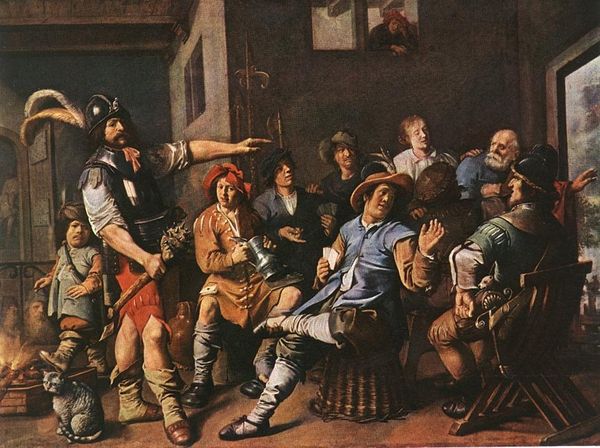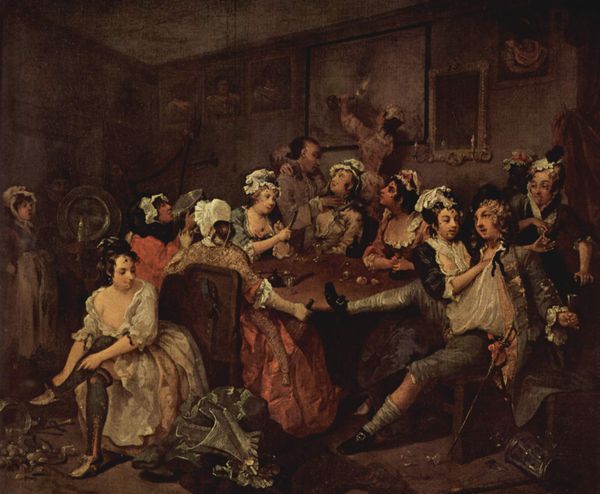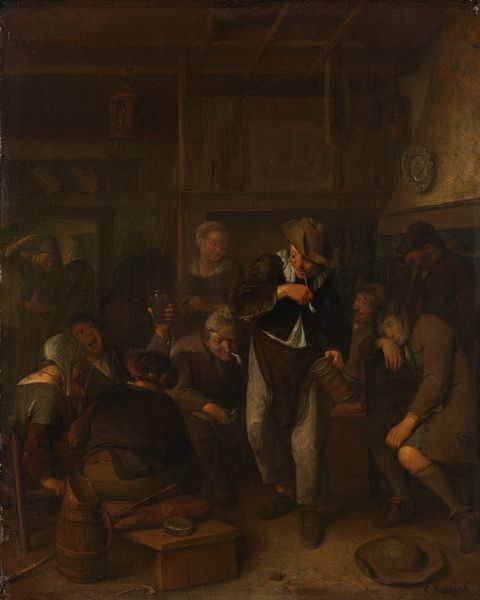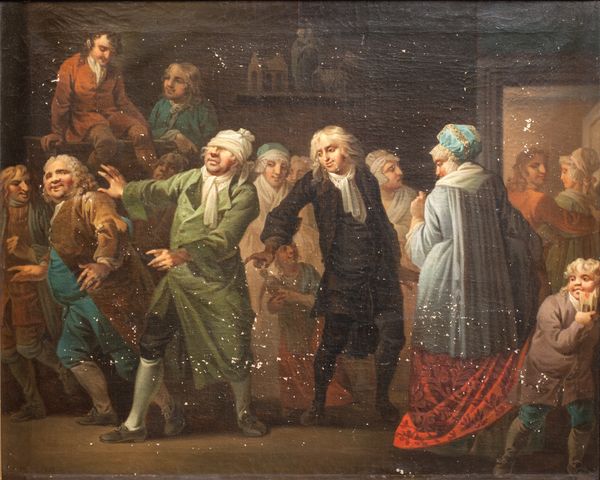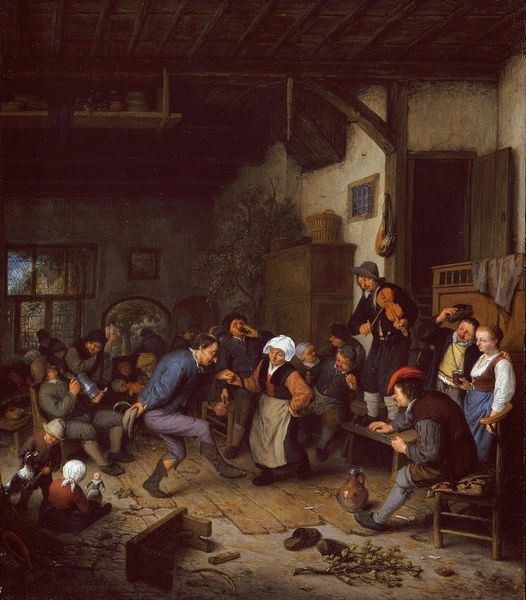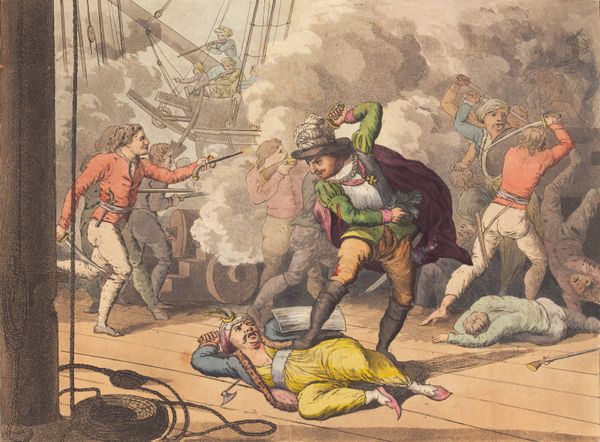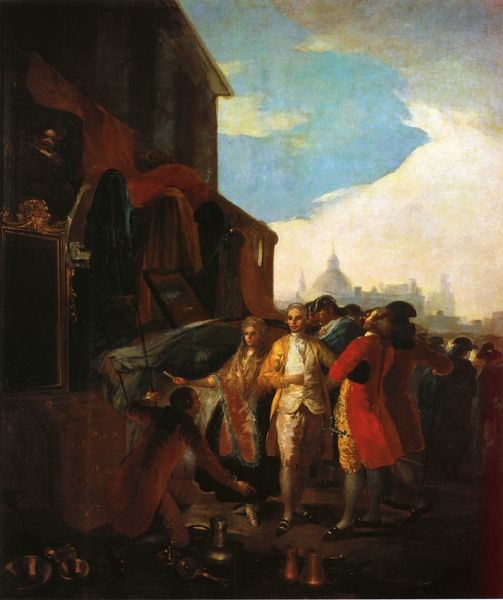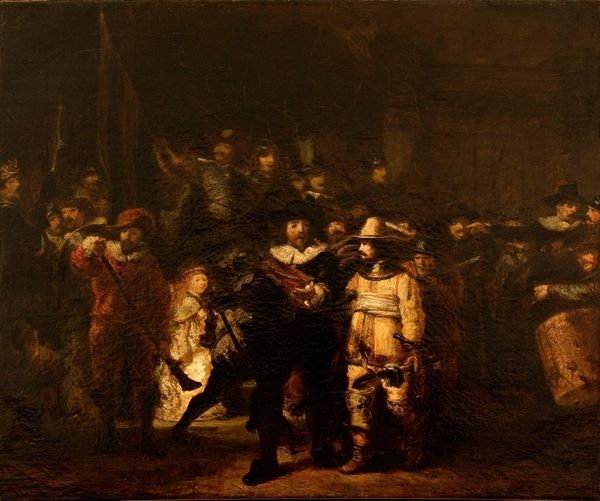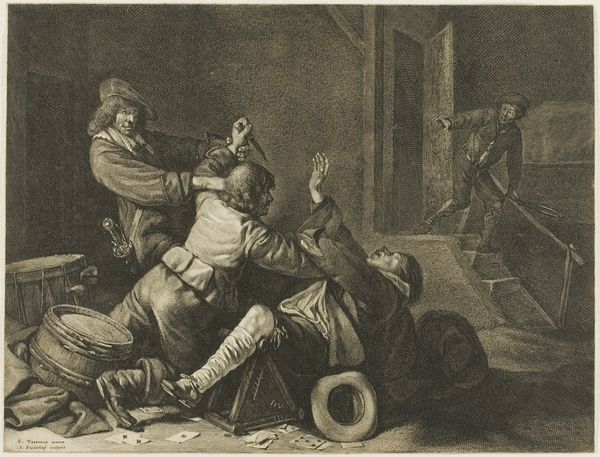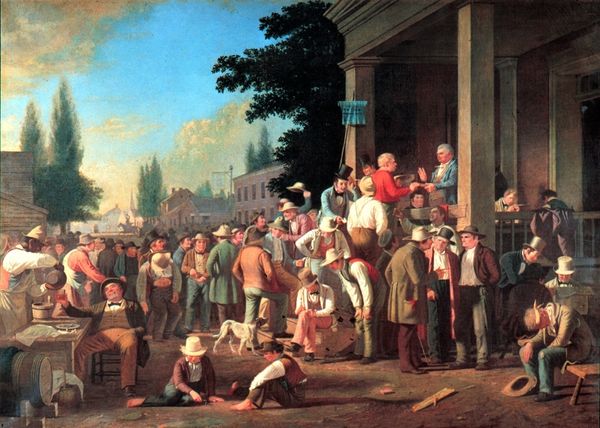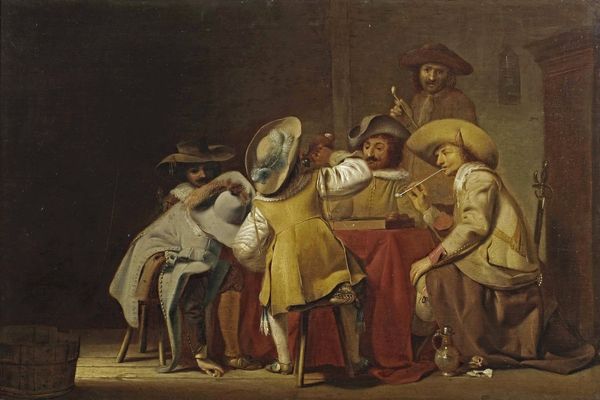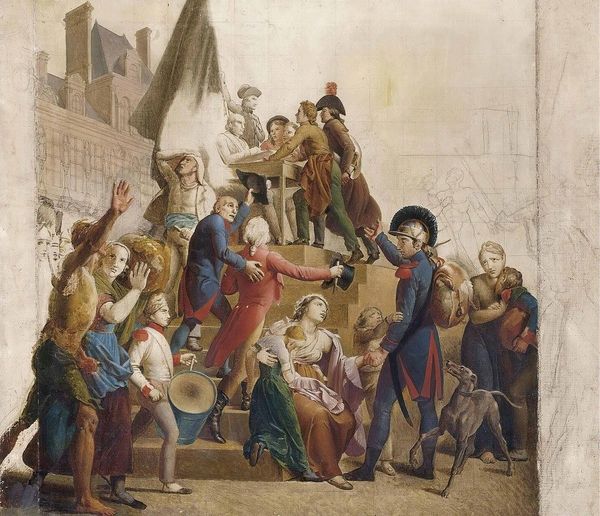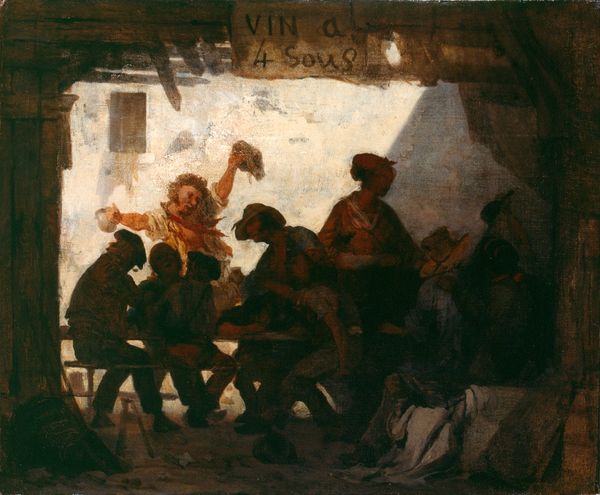
painting, oil-paint
#
narrative-art
#
painting
#
caricature
#
oil-paint
#
romanticism
#
genre-painting
#
mixed media
#
watercolor
Copyright: Public domain
Editor: So, this is John Quidor's oil on canvas painting from 1839, "Antony Van Corlear Brought into the Presence of Peter Stuyvesant." It's quite chaotic and feels almost theatrical in its staging. What catches your eye in terms of how Quidor tells this story? Curator: Indeed! Note how the figures are exaggerated, almost caricatured, reminiscent of the grotesque imagery common in morality plays. Quidor is engaging with a cultural memory here, tapping into anxieties surrounding authority and representation of colonial figures. Does the lone trumpeter remind you of any particular trope? Editor: He seems like a town crier...or perhaps a figure of revelry, maybe announcing the arrival. I hadn't thought about it in relation to anxieties about colonial authority though. Curator: Exactly! He's blowing a twisted horn; this fanfare is disrupted, subversive. Think about the choice of depicting Stuyvesant as so languid and unmoved by the ‘announcement.’ Does this inform your initial impression? Editor: Yes, it does! It suggests the supposed 'importance' is hollow, mocked even. What about the symbolism of Stuyvesant's accoutrements—the weapons at his side? Curator: Ah, those objects form an intentional paradox! Note how the sword and firearm—symbols of power and control—appear unwieldy, more like props than functional weapons. How does that interplay with the seemingly nonchalant pose of the main subject? Editor: I guess it adds to the idea of undermining power. This whole scene reads like a grand farce, a critique of authority figures rather than a respectful depiction. I was so focused on the busyness of it that I didn't initially appreciate that reading! Curator: It is easy to miss. Every figure here feels like an echo of familiar stage characters used throughout visual and literary culture. Considering the artist and context deepens the way a contemporary audience might have viewed the message. Editor: That's a great perspective to consider! Thanks so much!
Comments
No comments
Be the first to comment and join the conversation on the ultimate creative platform.
